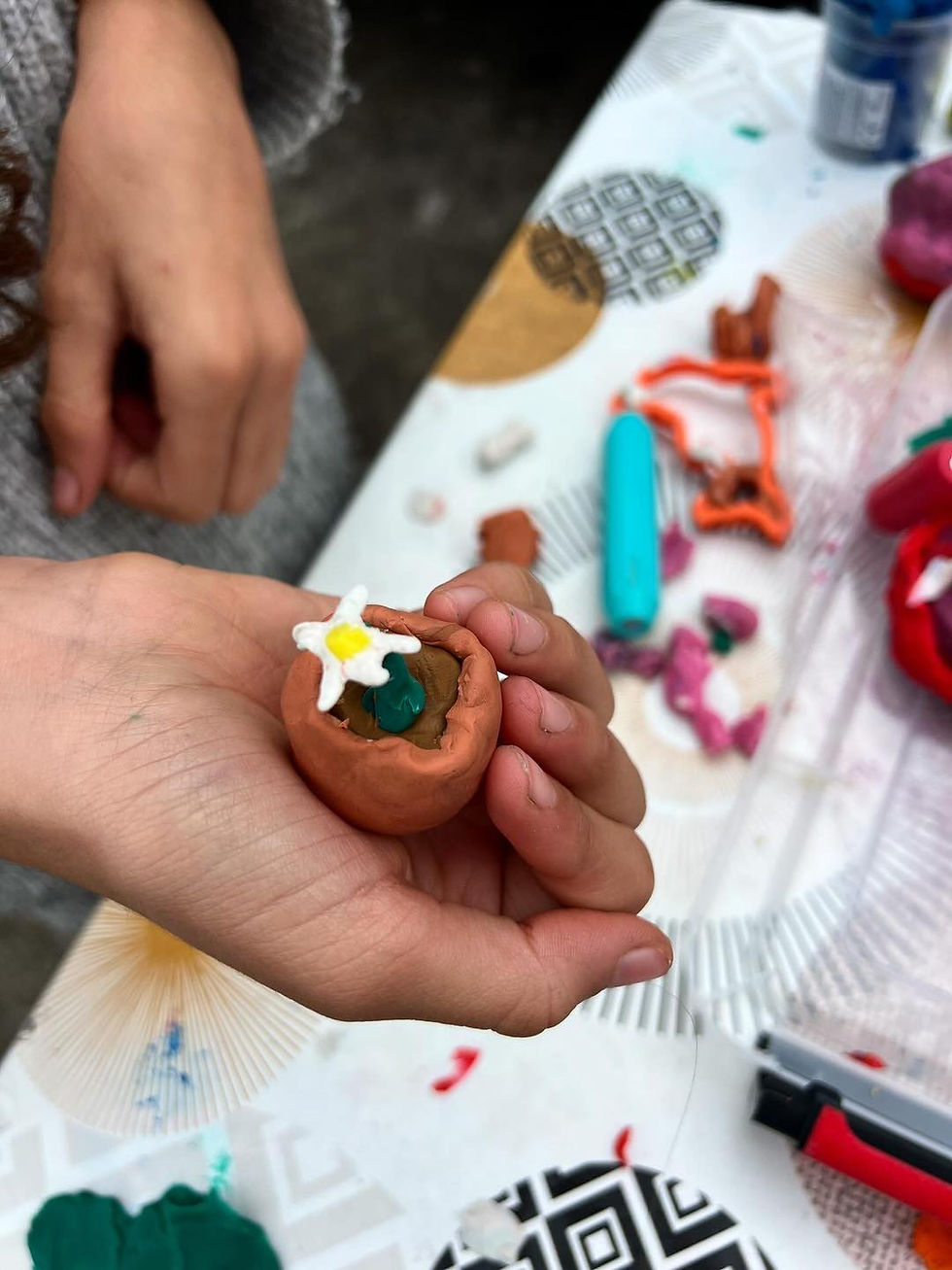What's left behind
- Art Refuge

- Aug 26, 2016
- 3 min read

CALAIS
We adapted to the extreme heat and humidity over the two days by utilising both the inside and outside of our spaces. The Sudanese young men did not struggle in the heat and played very energetic games of football and rugby, dipping into art making and looking together with us at postcards of art and photography, some helping to mark the extended space by pinning up the cards on the portacabin door.
A small ten year old boy dressed in traditional Afghani clothing, created an abstract painting with charcoal shapes and scribbles, using a stick of oil pastel to roll the thick white acrylic across the dark lines, sitting quietly for some time before running towards the basketball net to find other ways to exert his stored up energy. An adolescent Afghani boy with him had arrived only two days previously and he had been brought to the CAMI by a community elder to try to trace his family and find a way to acquire phone. After being supported to speak with the Red Cross visiting the CAMI to offer a tracing service, he sat with our team outside painting. When introduced to the space he was quick to share that he was stressed and concerned having not had contact with family back home for a number of days, which impacted on his ability to rest and sleep. Another elder of an African community brought a teenage boy to CAMI for a welcome pack, whilst a noticeable number of young boys came seeking essential phone fixing and credit.
A young boy from Darfur came back to see us after regularly accessing the Art Refuge UK space for a few months, where he chose to use the quieter inside space of the portacabin to return to making scenes of plasticine men riding animals, this time starting to open up through one-to-one work with the team – telling his deeply saddening story of loss which had led to him fleeing his country. Two young adolescents from Afghanistan also appreciated the calm settled spaced inside the portacabin and sat for some time occasionally breaking in to song about “Kabul, Kabul…”.
Friday’s session in the Medecins du Monde space offered a return to cyanotypes and a sharing of different objects and skills across cultures to play with ideas and ‘sun-printing’. Some of the objects were plasticine models from previous weeks and two friends from Sudan drew in onlookers from the group as they played the wind instruments they had made with the unused plasticine, making bowls that were then curved to make a hollow shape, removing small circular pieces to makes holes, and then making music that could be heard both outside and inside the tent.
The cyanotypes continued to bring together natural and man made objects – found close to the tent or from a growing collection of the group; comb, toothbrush, half a CD, tent poles, rubber sole of a shoe, tiny fragments of tiles, pots and discarded bricks. Group members also made stencils as an extension and exploration of the cyanotypes; creating images from items or pieces that are removed. People gathered to watch each other position chosen fragments on the prepped papers; how long to leave them on the paper in the sun?; what grades of shadows would appear?; what would happen when the paper was placed in cold water?; did we recognise these plants from home? One man explained “Here’s a chosen collection of basic objects found in every home – comb, toothbrush, cutlery and plates for our table…”
We wondered about how Art Refuge UK’s absence is experienced in between sessions and about the hope that is left in the place of the few young boys and men who successfully leave the camp at night and who don’t return, having made it to the UK, and how we remember each other throughout shared absences.



Comments